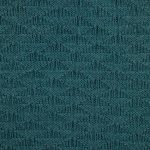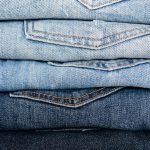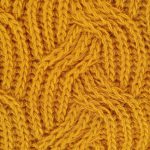Are you curious to know whether velvet is a knit or woven fabric? Look no further!
This article aims to provide you with a clear understanding of the characteristics of velvet and whether it falls into the category of knit or woven fabrics.
By delving into the process of how velvet is made, we will explore the intricacies of this luxurious fabric and shed light on its construction.
So, let’s unravel the mystery of velvet together!
Table of Contents
The Definition of Velvet
Velvet is a type of fabric that you can feel the softness of when you touch it. It is a luxurious material that is known for its smooth and plush texture. The definition of velvet is a closely woven fabric that has a dense pile, which gives it its unique softness and sheen. The pile is created by evenly distributed short, dense fibers that stand upright from the base fabric.
Velvet is made through a complex weaving process. Traditionally, it was made using silk, which is still considered the most luxurious option. However, nowadays, velvet can be made from a variety of fibers such as cotton, polyester, rayon, and even synthetic materials. The fabric is woven on a specialized loom that creates two sets of warp threads. The first set creates the base fabric, while the second set forms the pile. The pile threads are woven into the base fabric, creating loops. These loops are then cut, resulting in the distinctive soft and plush pile that velvet is known for.
Understanding Knit Fabrics
Understanding different types of stretchy materials can help in distinguishing between different types of fabrics. One type of stretchy material commonly used in fabrics is knit. Knit fabrics are made by interlocking loops of yarn, creating a stretchy and flexible fabric. There are different types of knit fabrics, such as jersey, rib knit, and interlock.
Jersey knit is a lightweight fabric with a smooth and flat surface. It is commonly used for t-shirts, dresses, and activewear. Rib knit has raised vertical lines, which give the fabric more stretch and texture. It is often used for cuffs, collars, and waistbands. Interlock knit is a double-knit fabric that is thicker and more stable than jersey knit. It is commonly used for sweaters and winter clothing.
When caring for knit fabrics, it is important to follow the care instructions provided. Most knit fabrics can be machine washed, but it is recommended to use a gentle cycle and cold water to prevent stretching or shrinking. To dry, lay the fabric flat or hang it to avoid stretching. Ironing is usually not necessary, but if needed, use a low heat setting and iron on the wrong side of the fabric.
Understanding Woven Fabrics
Woven fabrics are a fundamental aspect of textile production. They are characterized by their interlacing of warp and weft yarns, resulting in a sturdy and structured fabric.
The advantages of woven fabrics include their durability, versatility, and ability to hold their shape. Common types of woven fabrics include cotton, linen, denim, and twill, each with its own unique characteristics and uses.
Characteristics of Woven Fabrics
Woven fabrics are known for their strong and durable qualities. The structure of woven fabrics consists of two sets of yarns interlaced at right angles to each other. This interlacing creates different types of woven fabric weaves, such as plain weave, twill weave, and satin weave.
In a plain weave, each weft yarn goes alternately over and under each warp yarn. This results in a simple, balanced fabric with good stability. Twill weave, on the other hand, creates a diagonal pattern and is often used for denim and suiting fabrics. Satin weave produces a smooth, lustrous fabric with a glossy surface.
Each weave has its own unique characteristics and uses, but all woven fabrics share the common benefits of strength, durability, and versatility.
Advantages of Woven Fabrics
Woven fabrics offer a wide range of benefits, including strength, durability, and versatility. Here are some advantages of using woven fabrics:
-
Strength: Woven fabrics are known for their superior strength, making them ideal for applications that require durability and resistance to wear and tear.
-
Durability: Due to their tightly woven structure, woven fabrics are highly durable and can withstand repeated use and washing without losing their shape or integrity.
-
Versatility: Woven fabrics come in various weights, textures, and patterns, making them versatile for different applications such as clothing, upholstery, and home decor.
When comparing knit and woven fabrics, there are some noticeable differences. Knit fabrics are made by interlocking loops of yarn, creating a stretchy and flexible fabric. On the other hand, woven fabrics are made by interlacing two sets of yarns at right angles, resulting in a more stable and structured fabric.
While knit fabrics offer more stretch and comfort, woven fabrics provide better shape retention and durability. Ultimately, the choice between knit and woven fabrics depends on the specific requirements of your project.
Common Woven Fabric Types
Cotton is a common type of fabric used in clothing and home decor. Woven fabrics are made by interlacing two or more sets of yarns at right angles to each other. They are known for their strength, durability, and breathability. Woven fabrics come in various types, each with its own unique characteristics. Here are some common woven fabric types:
| Type of Fabric | Characteristics | Common Uses |
|---|---|---|
| Cotton | Soft, breathable | Shirts, dresses, sheets |
| Linen | Lightweight, cool | Summer clothing, towels |
| Silk | Smooth, luxurious | Dresses, scarves |
| Wool | Warm, insulating | Sweaters, blankets |
These fabrics are versatile and can be used for a wide range of applications. Whether you’re looking for comfort, style, or functionality, woven fabrics have got you covered. The interlacing of yarns gives them their unique properties, making them a popular choice in the textile industry.
Characteristics of Velvet
Velvet, with its soft and luxurious texture, is often used for upholstery and formal clothing. It is a unique fabric that stands out due to its distinct characteristics. Here are some key features of velvet:
-
Velvet Texture:
-
Velvet has a dense and plush pile, which gives it a velvety texture.
-
The pile is made from short, densely packed fibers that create a smooth and soft surface.
-
When you run your hand over velvet, you can feel its characteristic softness and smoothness.
-
Velvet Applications:
-
Upholstery: Velvet is commonly used for upholstery, adding a touch of elegance to furniture pieces like sofas and chairs.
-
Clothing: Velvet is also a popular choice for formal clothing such as evening gowns, suits, and jackets due to its luxurious appearance.
-
Accessories: Velvet is often used to make accessories like bags, shoes, and hair accessories, adding a touch of sophistication to any ensemble.
-
Care Tips:
-
Velvet requires special care due to its delicate nature.
-
To maintain its texture and appearance, velvet should be dry cleaned or hand washed gently.
-
It is important to avoid excessive rubbing or ironing to prevent crushing the pile.
Is Velvet a Knit Fabric
Contrary to popular belief, velvet is not commonly classified as a knit fabric. Velvet is actually a woven fabric, which means it is made by interlacing warp and weft yarns at right angles to create a sturdy and durable textile. Although velvet is not a knit fabric, it does possess some stretch due to the way it is woven. This means that velvet can have some give and flexibility, making it comfortable to wear. However, it is important to note that the amount of stretch in velvet can vary depending on the specific type and construction of the fabric.
In terms of warmth, velvet is known for its insulating properties. The dense pile and plush texture of velvet help to trap heat close to the body, providing warmth in cooler temperatures. This makes velvet a popular choice for winter clothing and accessories, such as coats, scarves, and hats. Additionally, the luxurious appearance of velvet adds an element of elegance and sophistication to any outfit.
Is Velvet a Woven Fabric
If you’re wondering about the classification of velvet, it’s important to note that it is not a common type of knit textile. Velvet is actually a woven fabric that is known for its luxurious and soft texture. Here are some key points to help you understand the manufacturing process and properties of velvet:
-
Velvet manufacturing process:
-
Velvet is traditionally made using a specialized loom called a velvet loom.
-
The fabric is woven with two sets of warp threads and one set of weft threads.
-
The two sets of warp threads are woven together to create a dense pile on the surface of the fabric.
-
After weaving, the fabric goes through a process called ‘cutting’ where the pile loops are cut to create the characteristic soft feel of velvet.
-
Properties of velvet:
-
Velvet has a dense pile which gives it a plush and luxurious appearance.
-
It has a smooth and soft texture that feels wonderful against the skin.
-
Velvet has a rich and lustrous sheen that adds to its elegance.
-
It is known for its excellent draping qualities and ability to hold its shape well.
Now that you know that velvet is a woven fabric, you can appreciate its unique manufacturing process and understand why it is prized for its luxurious properties.
How Velvet Is Made
Velvet is a luxurious fabric that has been cherished for centuries due to its softness and rich appearance. Understanding the production process of velvet can provide insight into its unique characteristics.
Additionally, exploring the historical significance of velvet can shed light on its cultural and societal value throughout time.
Velvet Production Process
The production process for velvet involves weaving two layers of fabric together. This creates the soft and luxurious texture that velvet is known for.
To engage you further, here are some interesting facts about the velvet production process:
-
Velvet dyeing process:
-
The fabric is dyed before it is woven to ensure an even and vibrant color.
-
Different dyeing techniques, such as piece dyeing or yarn dyeing, can be used to achieve different effects.
-
Velvet can be dyed in a wide range of colors, from deep and rich hues to bright and bold shades.
-
Velvet finishing techniques:
-
After the fabric is woven and dyed, it undergoes a process called pile cutting.
-
Pile cutting involves trimming the loops of yarn on the fabric surface to create the characteristic plush pile.
-
Other finishing techniques, such as steaming and brushing, are used to enhance the softness and luster of the velvet.
These processes ensure that velvet is not only visually appealing but also incredibly soft and comfortable to touch.
Velvet Fabric Characteristics
You’ll love how soft and comfortable velvet feels against your skin. Velvet is a luxurious fabric known for its smooth touch and rich appearance. It is made from a combination of silk, rayon, or synthetic fibers, and is characterized by its dense pile. Here are some key properties of velvet fabric:
| Property | Description |
|---|---|
| Softness | Velvet is incredibly soft and plush, making it a popular choice for clothing and upholstery. |
| Durability | Despite its delicate appearance, velvet is a durable fabric that can withstand regular use. |
| Insulation | Velvet provides excellent insulation, keeping you warm in colder weather. |
| Luster | Velvet has a natural sheen that adds a touch of elegance to any garment or home decor. |
| Drapability | Velvet has excellent draping qualities, allowing it to hang gracefully and create beautiful folds. |
| Versatility | Velvet can be used for various purposes, including clothing, accessories, upholstery, and home decor. |
With its luxurious feel and versatile nature, velvet is a fabric that can elevate any design. Whether you’re looking to create a stunning evening gown or add a touch of sophistication to your living room, velvet is the perfect choice.
Velvet’s Historical Significance
Now that you know about the characteristics of velvet fabric, let’s dive into its historical significance.
Velvet has been sought after for centuries due to its luxurious feel and rich appearance. It was first produced in ancient Egypt and later became popular in Europe during the Renaissance period.
During the Middle Ages, velvet was a symbol of wealth and power, often worn by royalty and nobility. The production process of velvet was time-consuming and labor-intensive, making it a luxury fabric that only the wealthy could afford.
The historical significance of velvet extends beyond its association with the elite. It has also played a role in various cultural and religious traditions. In some cultures, velvet is used as a ceremonial fabric for special occasions and religious ceremonies.
Conclusion
In conclusion, velvet is neither a knit nor a woven fabric. It is a unique type of fabric that is made using a special weaving technique called ‘pile weave.’
This technique creates a soft and luxurious texture with a dense pile of cut or uncut loops on the surface. Velvet is known for its rich appearance and is commonly used for clothing, upholstery, and accessories.
So, next time you come across velvet, you’ll know it’s in a league of its own!
- Pure Katan Silk vs. Semi-Katan Silk: What’s the Real Difference? - June 29, 2025
- The Complete Guide to Banarasi Katan Silk Fabric - June 29, 2025
- Katan Silk Fabric Explained: a Deep Dive Into a Luxurious Textile - June 29, 2025




